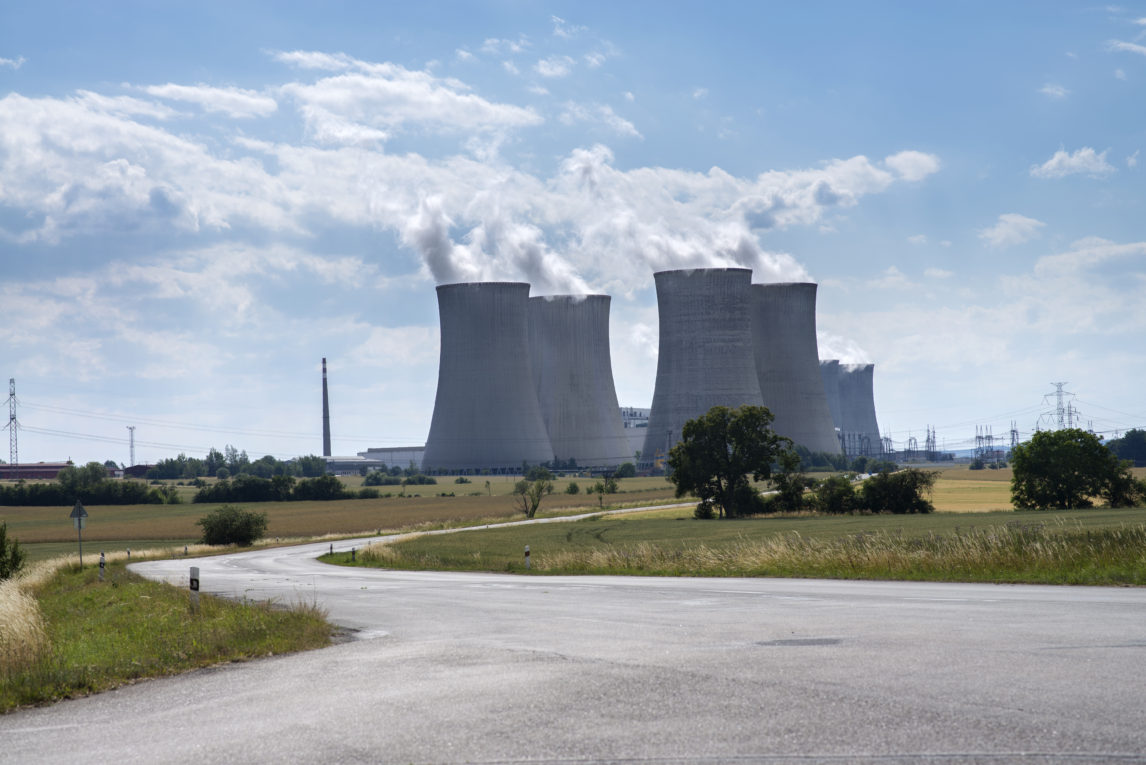FOR IMMEDIATE RELEASE
March 30, 2019
Contact: Jessica Azulay, Alliance for a Green Economy, (315) 480-1515
Governor Cuomo’s nuclear bailout enters 3rd year as cost to NY electricity customers goes up, not down as Cuomo administration projected
Opponents of the nuclear subsidies renew call on the administration to let customers opt out of paying for subsidies by buying renewable energy instead
During the first 2 years of the Cuomo administration’s nuclear bailout, from April 1, 2017 to March 31, 2019, New York electricity customers paid, on average, $1.3 million per day in subsidies to Exelon Corporation to prop up four upstate nuclear plants. The subsidies are payments on top of what we would otherwise be paying for electricity. This 2-year period concludes on March 31, 2019 by which time New Yorkers will have paid an estimated $965 million in nuclear subsidies.
On April 1, 2019, New York electric utility customers begin the third year of payments to Exelon Corporation for the nuclear bailout. However, our nuclear bailout payments will not decrease, as the Cuomo administration projected. Instead, the cost of the nuclear bailout will increase from approximately $482.5 million per year to approximately $541 million per year for the period from April 1, 2019 to March 31, 2021.
In light of the costs rising for the bailout, opponents of the subsidies are renewing their call on the Cuomo administration to make good on its August 1, 2016 promise to create an alternative for customers who do not want to pay the nuclear subsidies. This commitment was made by then Public Service Commission Chair Audrey Zibelman right before the Commission voted to approve the bail out. She said the Commission and NYSERDA would work to create a 100% New York produced renewable energy option that people could buy, and that people who chose that option should not have to pay for the nuclear bailout. The promise of the creation of that option was then reiterated in a press release put out by the Cuomo administration that same day.1
In August of last year, 136 organizations, businesses, and elected officials submitted a letter to the Governor letting him know how unpopular the forced nuclear bailout policy is and calling on him to amend it. The sign-on letter, spearheaded by Alliance for Green Economy (AGREE New York) and sent to Governor Cuomo and the Chair of the Public Service Commission John Rhodes on August 6, 2018, stated that “New Yorkers should not be forced to buy nuclear power or support aging reactors via charges on their utility bills if they are willing to buy 100% renewable energy.” The letter called on the Cuomo administration to make good on a (now two-and-a-half-year old) promise to create the option for electricity customers to opt out of subsidize failing nuclear plants by buying 100% renewable energy.2 The letter writers have yet to receive a response.
“This is about government accountability and making sure our money is spent on good investments for a renewable energy future,” said Jessica Azulay, executive director of Alliance for a Green Economy. “While nuclear costs are rising, the cost of energy conservation and renewable energy are falling. Customers who want to cover their usage with renewable energy should not have to pay these skyrocketing subsidies to dirty and dangerous nuclear plants.”
In the lead up to the 2016 decision to bail out the upstate nuclear plants, the Department of Public Service failed to provide accurate public information about the full cost of the bailout. They first said the cost would be $59 – $658 million total over 12 years.3 Then, three weeks before the decision was made, they changed their methodology for setting the subsidy price and announced the first two years would cost $965 million but supplied no estimate for the total cost.4 After approving the nuclear subsidies in August 2016, the administration released a document in March 2017 that predicted the subsidies would cost $2.9 billion over 12 years.5
The Public Service Commission (PSC) based their March 2017 estimate on a scenario of dramatically rising wholesale market prices, which would drive down the cost of the nuclear subsidies every two years. The PSC projected that the cost of the bailout would go down by $87 million in 2019 (costing New York electricity customers approximately $395.5 million per year for the April 1, 2019 to March 31, 2021 period). Two years later, Department of Public Service issued a letter stating the new prices for the nuclear subsidies and noted there would be no downward adjustment to the scheduled increase.6 Therefore, the subsidies will rise by $58 million to approximately $541 million per year.
This scheduled increase puts the subsidies on track to reach the $7.6 billion total by 2029 that opponents of the nuclear subsidies projected. So far the forecast by subsidy opponents is far more accurate that the administration’s forecast, which is now $145 million off the mark.
The next price adjustment for nuclear subsidies will be in 2021, when the cost is scheduled to rise again by another $49 million. At that point, the per megawatt hour (MWh) price of the nuclear subsidies could be well above what New York is currently procuring renewable energy and energy efficiency for. For example, recent NYSERDA solicitations for renewable energy resulted in prices of $21.71 per MWh in the 2017 auction and $18.77 per MWh in the 2018 auction. Prices for renewable energy are coming down while the price of nuclear subsidies is going up: $17.48 per MWh in 2017, $19.59 per MWh in 2019, and a projected $21.38 per MWh in 2021.7
“One of the most absurd things about the nuclear bailout is that the cost is going up as the shelf-life of New York’s aging reactors gets shorter,” said Tim Judson, Executive Director of Nuclear Information and Resource Service. “This is like paying more for milk that’s about to expire. New York’s reactors are some of the oldest in the world and will need to be replaced in a few years anyway. New York should be investing more in renewable energy and efficiency, instead.”
1 Public Service Commission Regular Session 8/01/2016 (at 1:27) https://youtu.be/PUKwLd7OLHs
Governor Announces Establishment of Clean Energy Standard that Mandates 50 Percent Renewables by 2030 (August 1, 2016) Media release from Cuomo Administration https://www.governor.ny.gov/news/governor-cuomo-announces-establishment-clean-energy-standard-mandates-50-percent-renewables
3 Clean Energy Standard Cost Study (May 4, 2016) Page 30 http://documents.dps.ny.gov/public/Common/ViewDoc.aspx?DocRefId={C3A8FC63-41A7-4027-918E-9DB51CA1EE59}
4 Staff’s Responsive Proposal for Preserving Zero-Emissions Attributes (July 8, 2016) Page 2 http://documents.dps.ny.gov/public/Common/ViewDoc.aspx?DocRefId={BBFA4008-FD27-4209-B8E1-AD037578101E}
5 Copy of ZEC Price Forecast Spreadsheet Using Low Gas and July 2016 ICAP (Sept 29, 2016) https://www.politico.com/states/f/?id=0000015a-fcfd-dae7-a1fb-feffcaa40001
6 Department of Public Service filing RE: Case 15-E-0302 – Proceeding on Motion of the Commission to Implement a Large-Scale Renewable Program and a Clean Energy Standard (March 7, 2019) (reporting combined future forecast prices) http://documents.dps.ny.gov/public/Common/ViewDoc.aspx?DocRefId={86F3CC65-4D3F-49BC-9950-4C27DA9E4A80}
7 Clean Energy Standard Annual Progress Report: 2017 Compliance Year (Final Report I February 2019) NYSERDA
###

